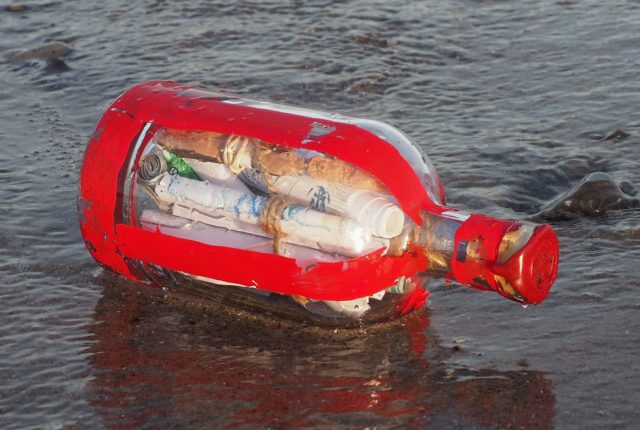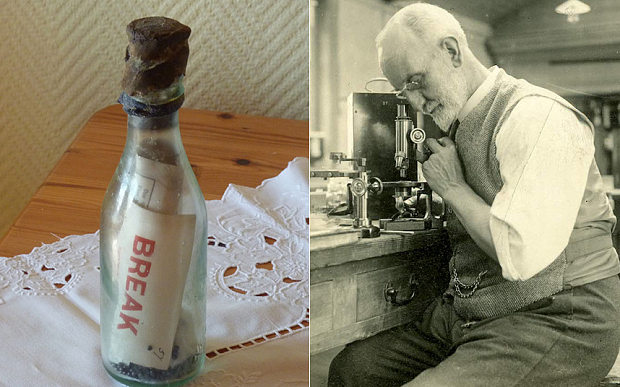On the 30th of November in 1906, George Parker Bidder, a distinguished marine biologist, threw 1,000 bottles into the North Sea. His goal: research to better understand the patterns of the ocean currents. Inside each bottle was a self-addressed postcard that would enable whoever found the bottles to send them back to Bidder. He wasn’t expecting a quick response.
Fast forward 108 years to the year 2015. One of the bottles was found by a German woman named Marianne Winkler. The retired postal worker was on vacation on Amrun, one of Germany’s North Frisian Islands. To be exact, it took 108 years, four months, and eighteen days for the bottle to be found. The Guinness World Records has confirmed that to be the oldest such message in the world.
When Winkler found the bottle, she saw writing through the glass of the bottle that read, “break the bottle.” She and her husband, however, attempted to remove the message without destroying the container. After several failed tries, they admitted defeat and broke the bottle. When they were able to extract the message from the shards, they read the instructions that Bidder had written in German, English, and Dutch. These instructions requested that the postcard be returned to the Marine Biological Association, located in Plymouth, Devon. The associated was founded in 1884 and still exists. Today, it is an internationally renowned marine research institution.

Recognizing the age of the postcard, the Winkler couple mailed the message inside an envelope to help with preservation. Although the couple knew the postcard was old, they were unaware its exact age. Before they posted the card, they followed the instructions to fill in the date and where it was found, then they sent it on its way to GP Bidder.
When the Marine Biological Association received the post, there was some amazement. However, Bidder’s name was still familiar in Plymouth—mostly due to the fact that he served as the president of the association for a remarkably long time. His term stretched between the years 1939 and 1945. He lived a long life. At the age of 91, he passed away in 1954.
In 1908, in an attempt to encourage the return of these bottles, the scientific institution offered a reward. A shilling was promised to whoever found and dutifully returned the messages. Up until these bottles, it had been unproven that the deep sea currents in the North Sea flowed from east to west. As fishermen began to mail the messages and gratefully accepted the reward, the theory was proven. At the time, a shilling (equivalent to about 12 pence) would have been a great boon to the families who found them. Overall, the return rate of the bottles to the association was about fifty-five percent. Bidder’s experiment is now referred to as citizen science, because it relies on the average person and not scientists to provide data.
Guy Baker is the communications officer at the association and said that they would honor the reward promised. “We found an old shilling, I think we got it on eBay. We sent it to her with a letter saying thank you.” He said.
On top of that reward, Winkler has also received the honor of confirmation by Guinness World Records of her find. The last record holder was a bottle that was found in Shetland in 2013. It had been adrift in the ocean for 99 years and 43 days.
Messages in bottles have often been sources of heartwarming stories. Part of their allure is that they can be found anywhere—unlike ancient ruins, bottles can be replenished. Ruins of long-forgotten cities are found and excavated and that’s it. On the other hand, anyone could find a bottle or even send one. For example, a retired Texan professor tossed a bottle containing a note and his business card overboard during a cruise. Fourteen years later and the bottle was found on an Australian beach, 6,000 miles from its origin.
